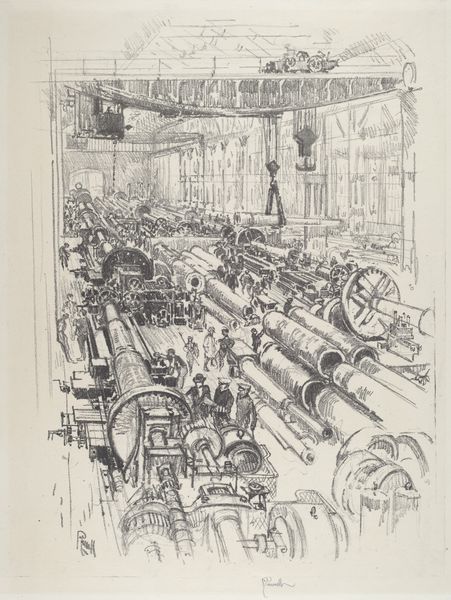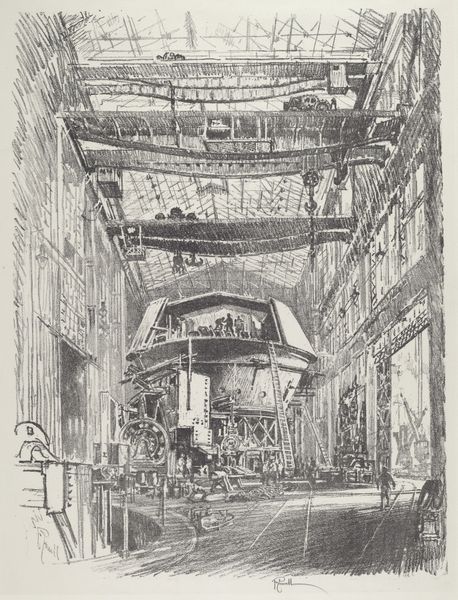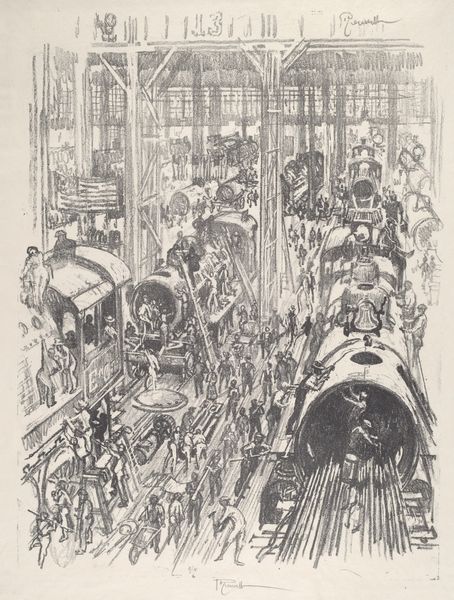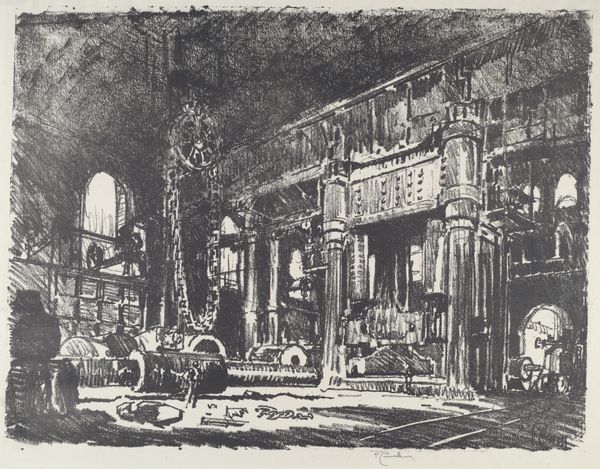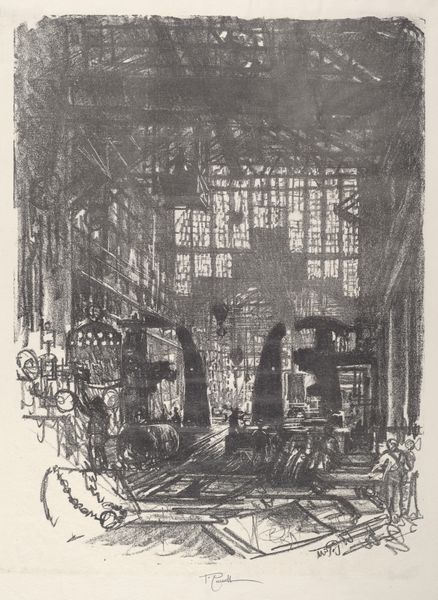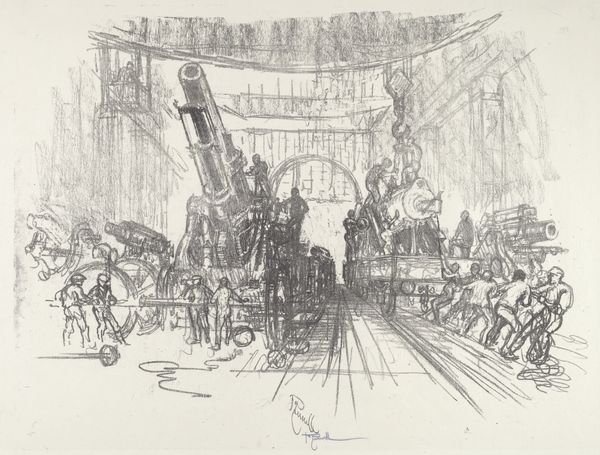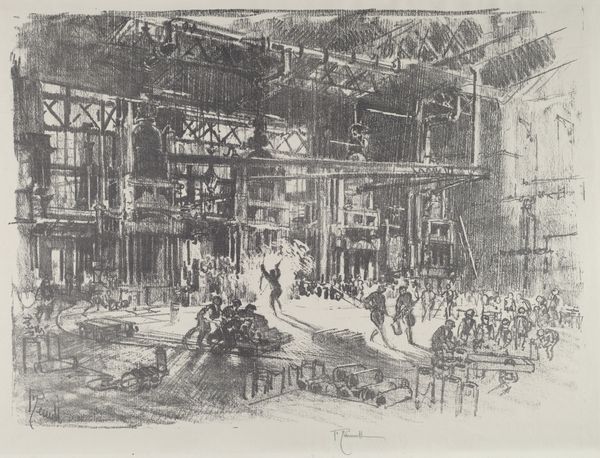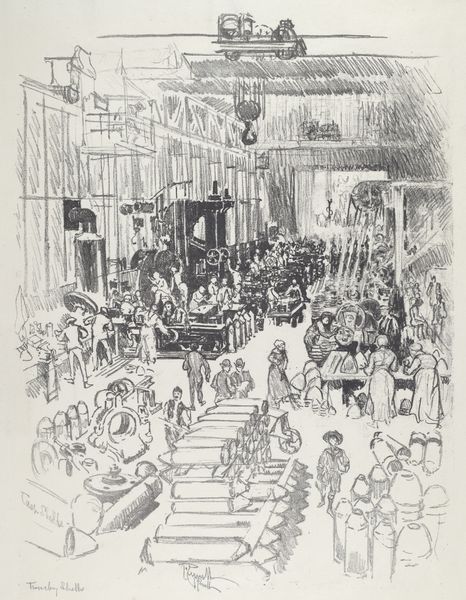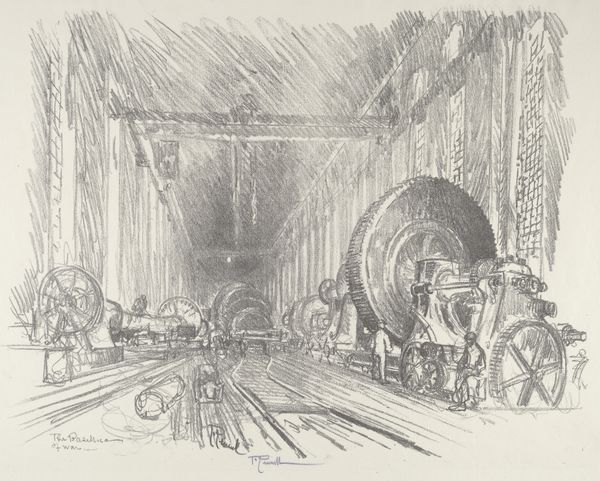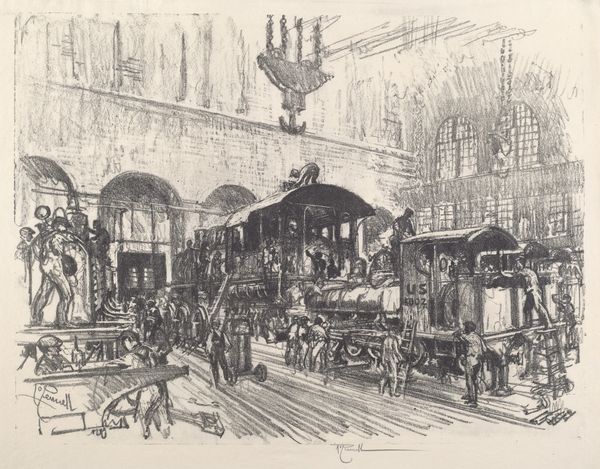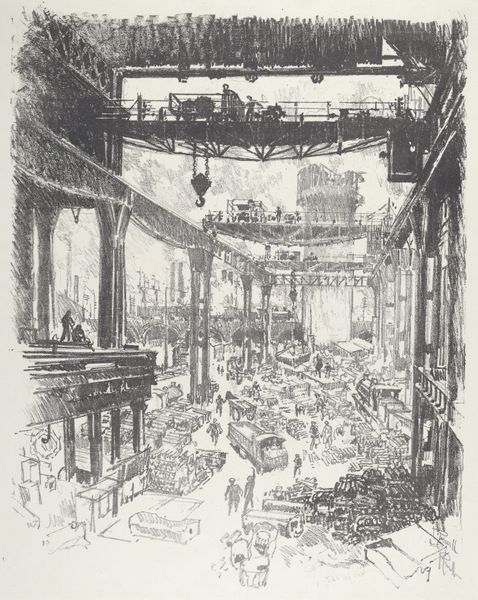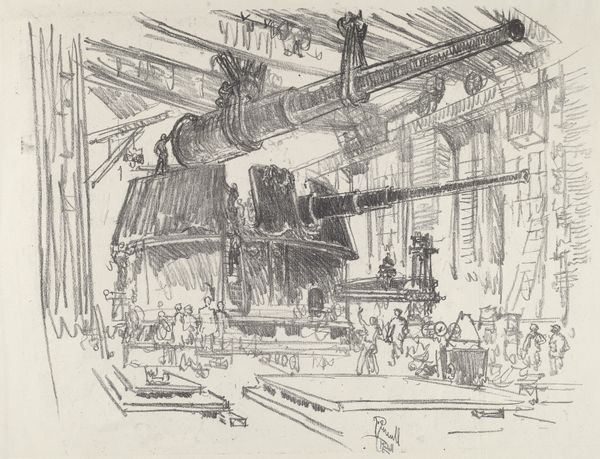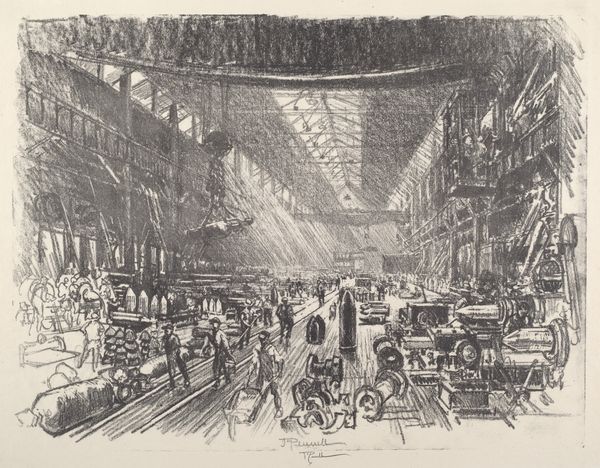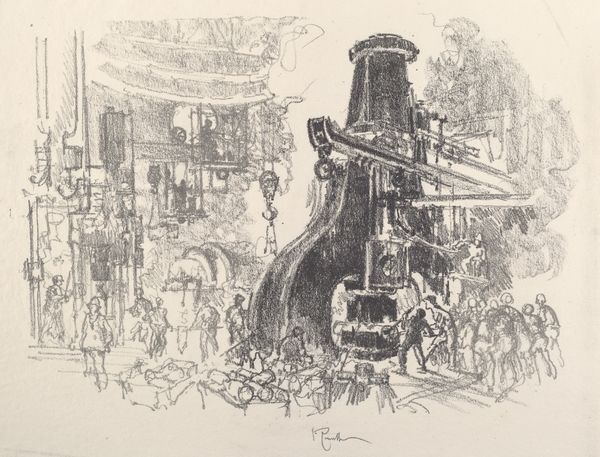
drawing, lithograph, print, ink
#
drawing
#
lithograph
# print
#
ink
#
cityscape
#
genre-painting
#
modernism
#
realism
Copyright: National Gallery of Art: CC0 1.0
Curator: Joseph Pennell's lithograph from 1917, "Making a Turbine Engine", presents a hive of activity inside what looks like a factory or industrial plant. What’s your immediate reaction to it? Editor: My eye is immediately drawn to the sheer scale. The colossal engine dwarfs the figures working on it, and the whole composition feels like a testament to the power and immensity of industrial production. The textures of the metal and the scaffolding give it such rawness. Curator: I think it reflects the complicated relationship between art and industrial progress at the beginning of the 20th century. Consider the historical context: This was created during wartime. How might that impact its meaning and our interpretation? Editor: The context of the First World War definitely shifts the perspective. It wasn't just about the marvel of industrialisation; it's about the war machine and what these materials were to be used for in terms of military power. Curator: Right. Also note how Pennell uses the lithographic process, using ink and a stone to emphasize both realism and a certain romanticized, idealized view of manufacturing, celebrating this collective work. Is it glorifying or simply documenting? Editor: I see a kind of glorification, frankly. He’s ennobling labor to some extent, while simultaneously acknowledging the intense materiality and physical demands of such work. This is not simply an innocent bystander's viewpoint. Curator: Absolutely. And considering how the industrial sector at that time often exploited immigrant workers or people from marginalized communities, it's critical to question if Pennell addresses labor inequities, or whether that context goes unseen in the composition itself. Editor: Precisely, who were these laborers, and under what conditions did they operate? Exploring Pennell's drawing invites these crucial questions about labor conditions during wartime, expanding on its visual celebration of the machinery. It makes us consider who benefitted most. Curator: I’m struck now by the idea that such an industrial print can be at once aesthetically stimulating and thought-provoking on intersectional class and race themes. It certainly prompts many different thoughts. Editor: Exactly, I was mostly focused on its technicality at first, the labor of the workers making the turbine engine but in truth, there are so many different entry points to consider. The relationship between humans and their creations is central.
Comments
No comments
Be the first to comment and join the conversation on the ultimate creative platform.
